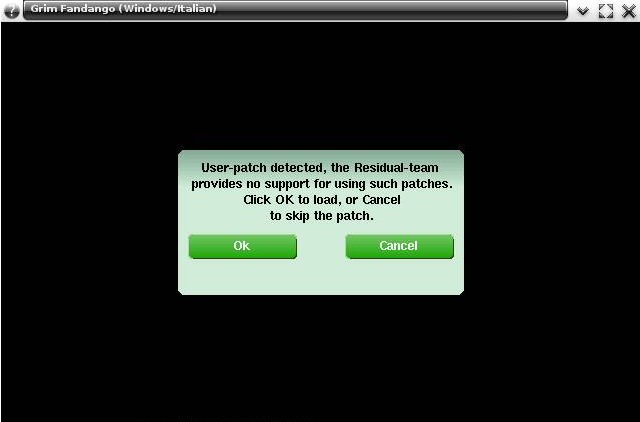Wow, two months passed since the last post; real life took me some time (as this did – sounds great! -), but I’m now getting into development again.
Anyway, here’s the usual list of notable improvements (which are a lot):
- Residual was renamed to ResidualVM, to match up with ScummVM (and because residual.org was already taken ;)).
- We have a new site, www.residualvm.org, and the forum was moved there.
- Following the rename, we are now on #residualvm on freenode, and the code is at www.github.com/residualvm/residualvm.
- We have a New engine! Myst3 is now supported, thanks to the work by Bastien (aka bgK). All hail to him! (I’m not into it, so don’t be afraid if you don’t hear of updates of it from me)
- Remember the last post, where I explained how to fix a bug in Grim’s data? Well, you can forget that, since Andrea (aka YakBizzarro) added a hot-patching system. No need to fiddle the data anymore, now ResidualVM’s code does the magic all by itself. Along with that other bugs in the scripts have been fixed.
- Similar to the entry above, now the official 1.01 patch is loaded directly as a .exe. You don’t need to extract it anymore, it will be loaded by ResidualVM as-is.
- TinyGL (the software renderer) now supports any color-mode and color depth.
These are the main things, but around them there are a terrific number of littler improvements and bug fixes.
 I took this graph from Ohloh. It shows the number of committers over time. You can clearly see the boost that happened recently, and that imho is the most notable improvement the project had.
I took this graph from Ohloh. It shows the number of committers over time. You can clearly see the boost that happened recently, and that imho is the most notable improvement the project had.
Stay tuned!
